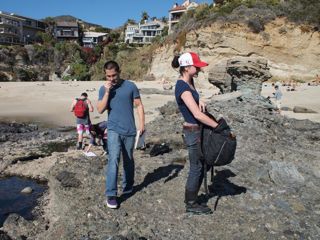
-
| 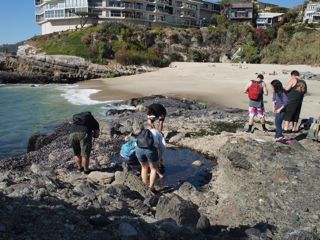
-
| 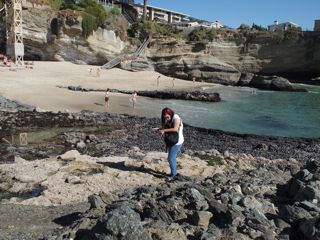
-
|
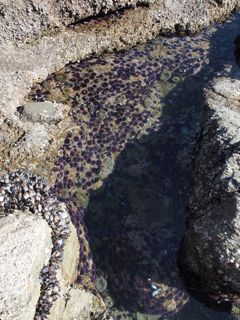
-
| 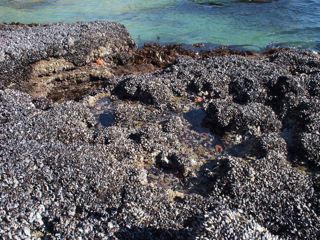
-
| 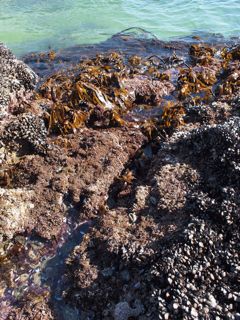
-
|
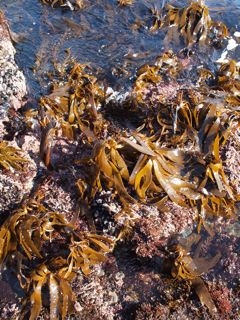
-
| 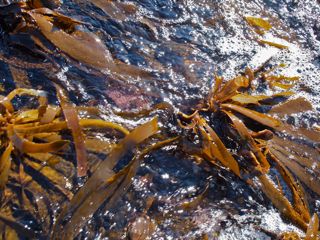
The southern sea palm (Eisenia arborea) was exposed by a slightly minus low tide.
| 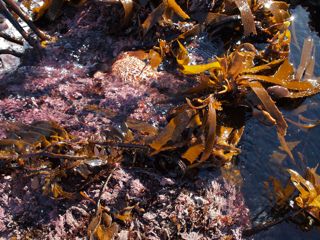
-
|
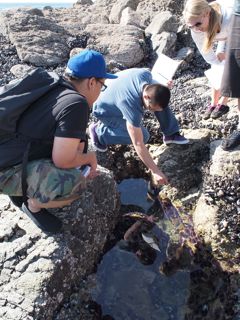
-
| 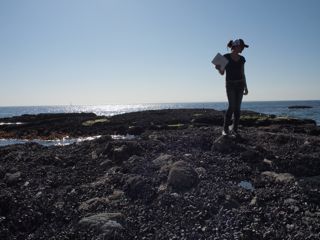
-
| 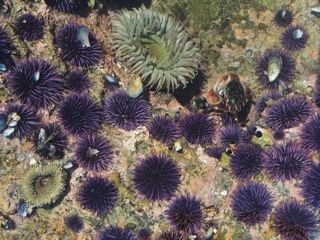
-
|
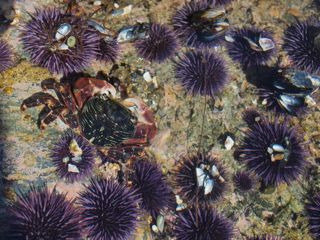
-
| 
This lined shore crab (Pachygrapsus crassipes) was feeding.
| 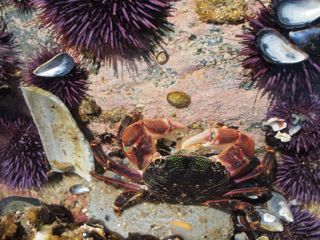
-
|

-
| 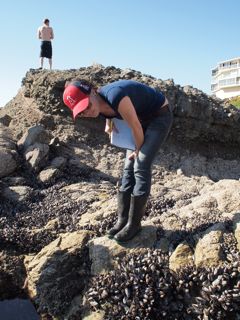
-
| 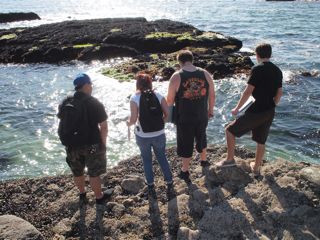
-
|
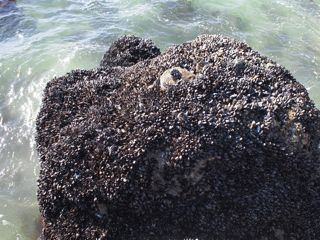
-
| 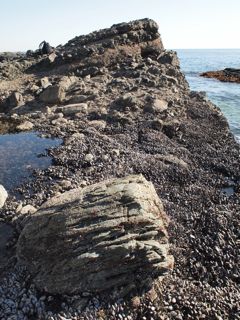
-
| 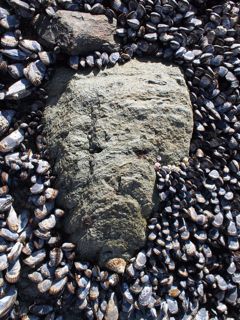
An owl limpet (Lottia gigantea) territory in a mid zone mostly dominated by California mussels
(Mytilus californianus).
|
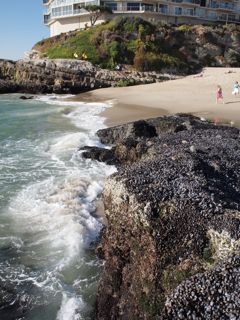
-
| 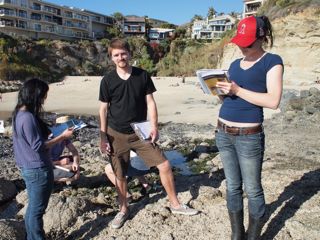
-
| 
-
|
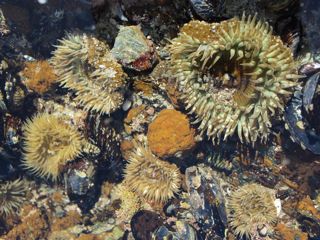
Sunburst anemones (Anthopleura sola) in a tidepool.
| 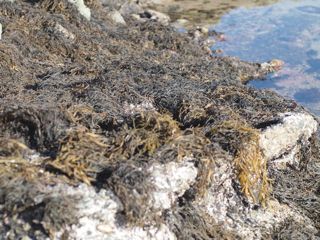
The rockweed, Silvetia compressa, was found in mid zone somewhat protected from waves.
| 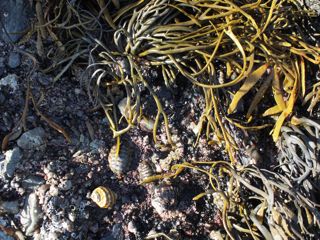
-
|

This southern shield limpet (Lottia "pelta") has discontinuous growth typical
of an individual of this species that has migrated from feather boa kelp to higher in the intertidal on rocks under rockweeds. My grad student, Chrystal, is studying this phenomenon.
| 
The chiton is Cyanoplax hartwegii or Hartweg's chiton. The snail on the left, Nucella emarginata or
dogwinkle, seemed unusually common compared to other OC beaches, perhaps because of all of the mussels at this site. The larger snail on the right is Mexacanthina lugubris (see below).
| 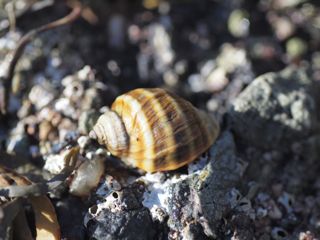
Nucella emarginata can be striped, as in this snail, or can have a solid light or dark coloration.
|
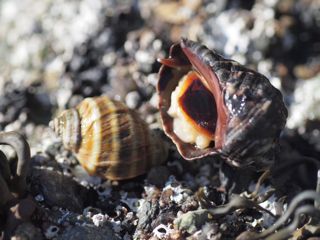
Mexacanthina lugubris (on right) is a more southern
whelk that might be been moving north in recent years although, as of 2002, it had been reported from Orange Co. only in 1937 and 1955 (see link 1 below).
I have also seen a few snails several times within the last decade at Thousand Steps beach,
a few miles to the south, and saw that it was extremely common on the beach in front of Scripps Institute of Oceanography, La Jolla, San Diego Co., in 2005 (link 2). - See also here:
1 - 2
| 
-
| 
-
|
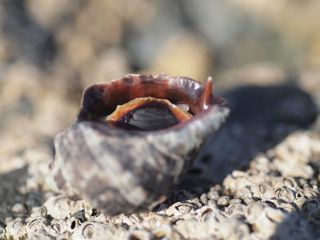
-
| 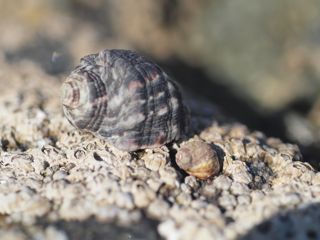
-
| 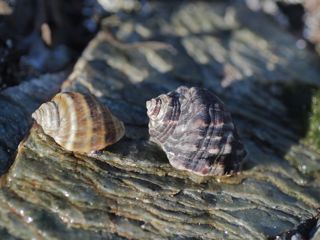
-
|

Littorina scutulata in splash zone
| 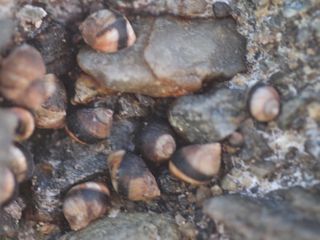
-
| 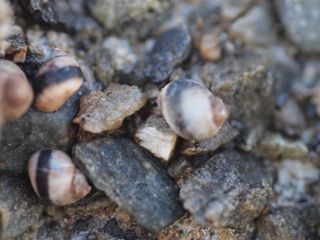
-
|

Littorina keenae on barnacles in high zone
| 
left: Littorina scutulata, right: Littorina keenae
| 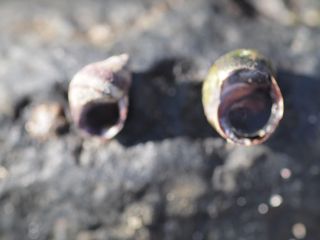
-
|
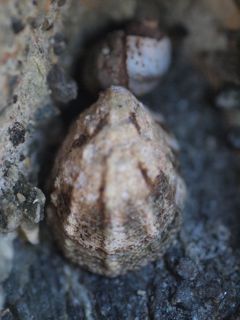
Lottia austrodigitalis rock morph
| 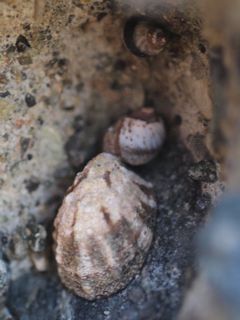
-
| 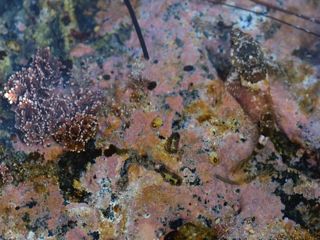
sculpin (unidentified)
|

-
| 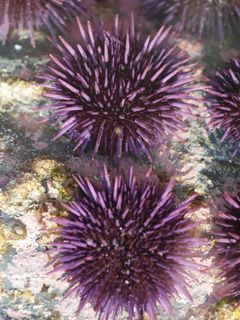
-
| 
-
|

-
| 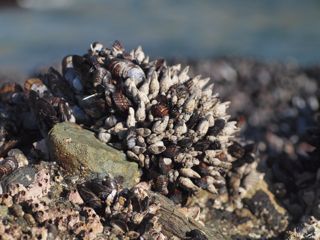
-
| 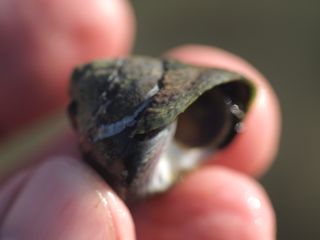
The species name, "gallina," of the speckled turban snail, Chlorostoma gallina [formerly Tegula (Chlorostoma) gallina],
means "hen" in Latin, and refers to the snail's often speckled appearance. It is similar to and likely a more southern sister species of the black
turban snail, Chlorostoma funebralis, but lacks the "scaly subsutural band and defined white basal area" of the latter, according to James McLean's Marine Shells of
southern California (1978). Compare these characteristics to C. funebralis here.
|
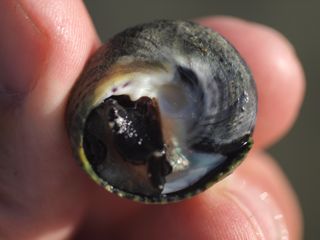
-
| 
-
| 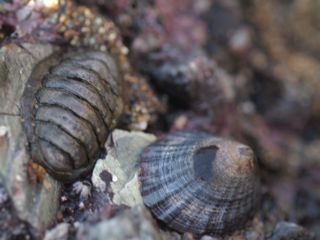
-
|

-
| 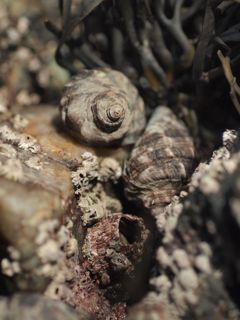
-
| 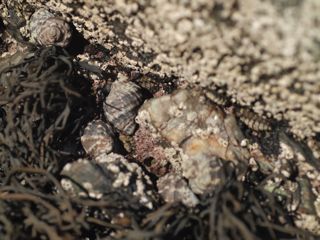
-
|

-
| 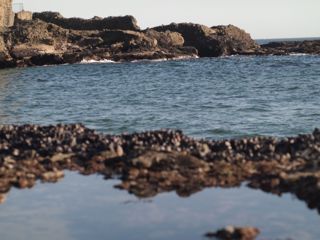
-
| 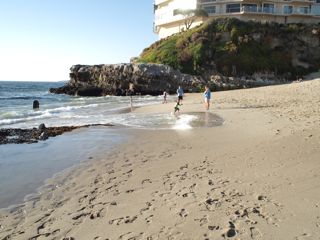
-
|
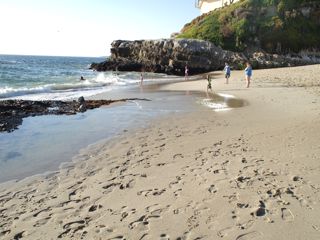
-
| 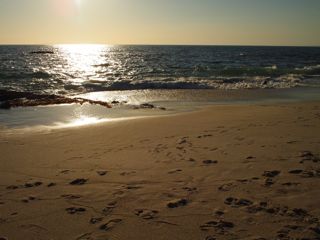
-
| 
-
|
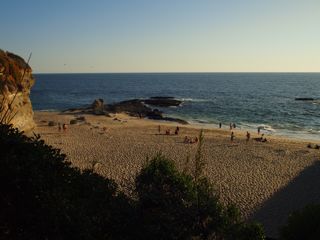
-
| 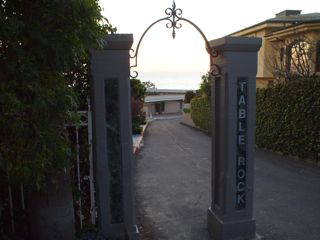
-
| 
-
|
 Under Construction!
Under Construction! Under Construction!
Under Construction!